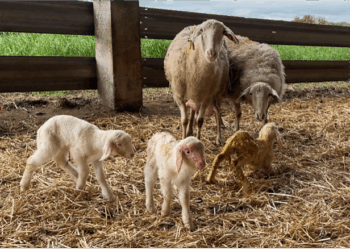In the following video, Dr Caro explains the key concepts of live attenuated vaccines and analyses a number of scientific publications from the last decade in which the safety of these vaccines is questioned.
She also explains the requirements for obtaining the ideal vaccine against Chlamydia abortus.
LIVE ATTENUATED VACCINES
In the video, Dr Caro outlines some of the main drawbacks of live attenuated vaccines:
– Possible risk of transmission to humans (Zoonosis).
– Not to be administered to gestating animals.
– Not to be administered to animals on antibiotic treatments.
– No mixing of vaccinated animals with non-vaccinated animals.
– No interruption of the cold chain.
PUBLICATIONS ON VACCINE STRAIN 1B (LIVE ATTENUATED VACCINE)
Between 1990 and 2000, a number of cases of abortions due to chlamydia were reported in vaccinated flocks in the United Kingdom, France and Spain, but the reason was unknown.
Thanks to the development of the PCR-RFLP technique by Dr Karine Laroucau, it became possible to make a differential diagnosis between vaccine strains and wild strains of Chlamydia abortus.
This allowed subsequent studies to be conducted, which confirmed a relationship between the use of live attenuated vaccines and the onset of abortion storms in Scotland (Wheelhouse et al.) and France (Laroucau et al.).
“In 2018, Dr Laroucau confirmed that the vaccine strain 1B caused an outbreak of abortions and also circulated in the flock, infecting unvaccinated animals”
Subsequently, after a complete genomic analysis of the different strains (vaccination and wild), the geneticist Dr David Longbottom (Longbottom et al.) confirmed what many scientists already suspected: the vaccine strain 1B included in live vaccines is not attenuated, and could potentially cause abortions and infect other animals.
“In 2018, David Longbottom confirmed that the vaccine strain 1B is NOT attenuated”
HOW CAN WE DEVELOP AN IMPROVED INACTIVATED VACCINE AGAINST CHLAMYDIA ABORTUS?
Dr Caro highlights three essential points in designing an effective inactivated vaccine:
– Antigen concentration.
– Suitable inactivation method.
– Adjuvant that enhances cellular immunity.
In conclusion, from Dr Caro’s lecture, we can deduce that the ideal vaccine should be a safe, effective and stable vaccine with low production costs, making it affordable for the farmer.
Following this event, an inactivated vaccine that meets these requirements was launched on the market.




